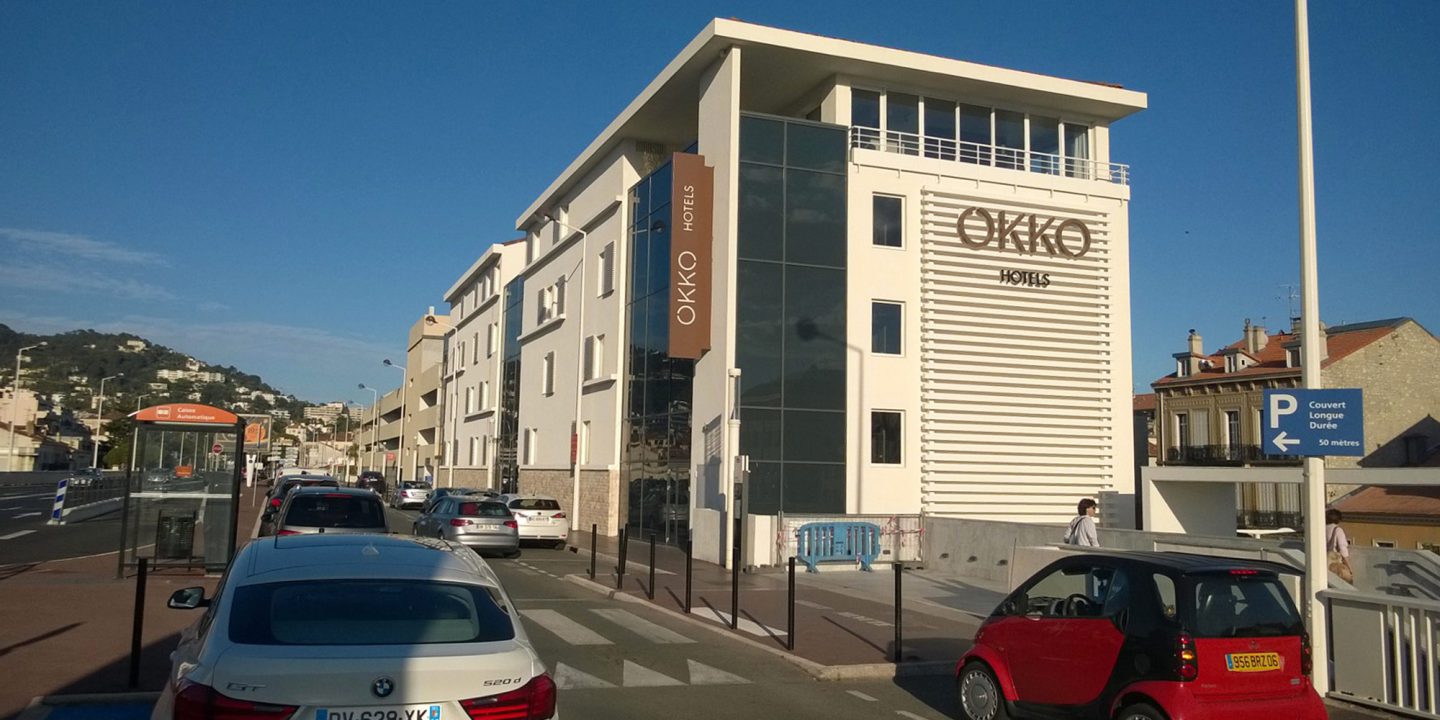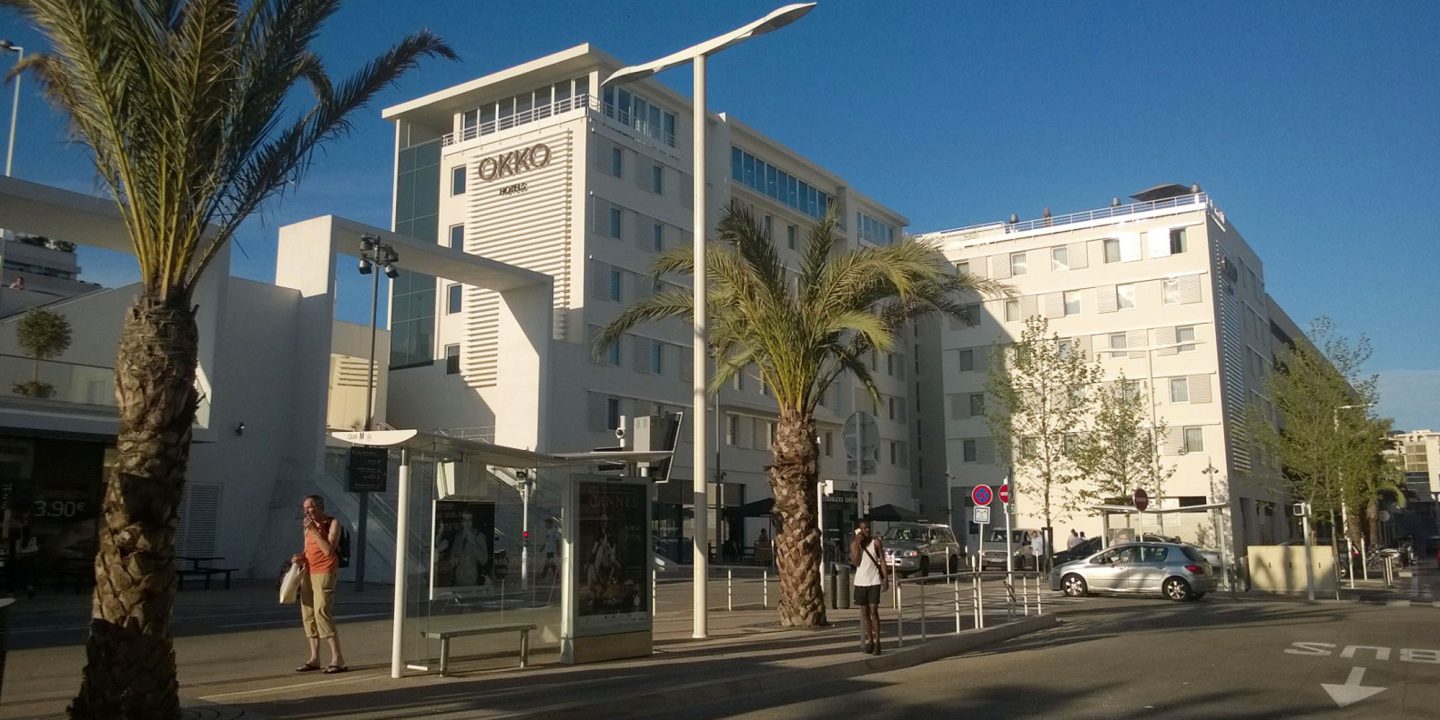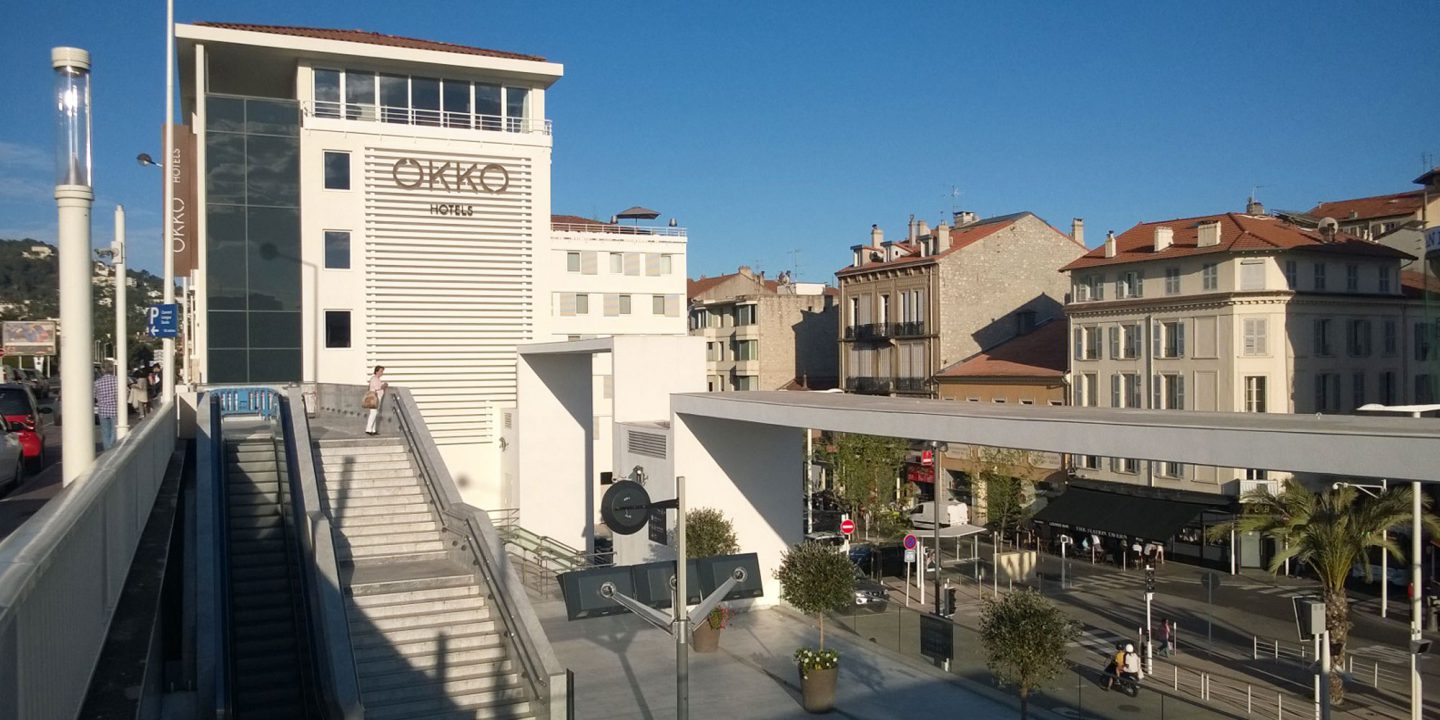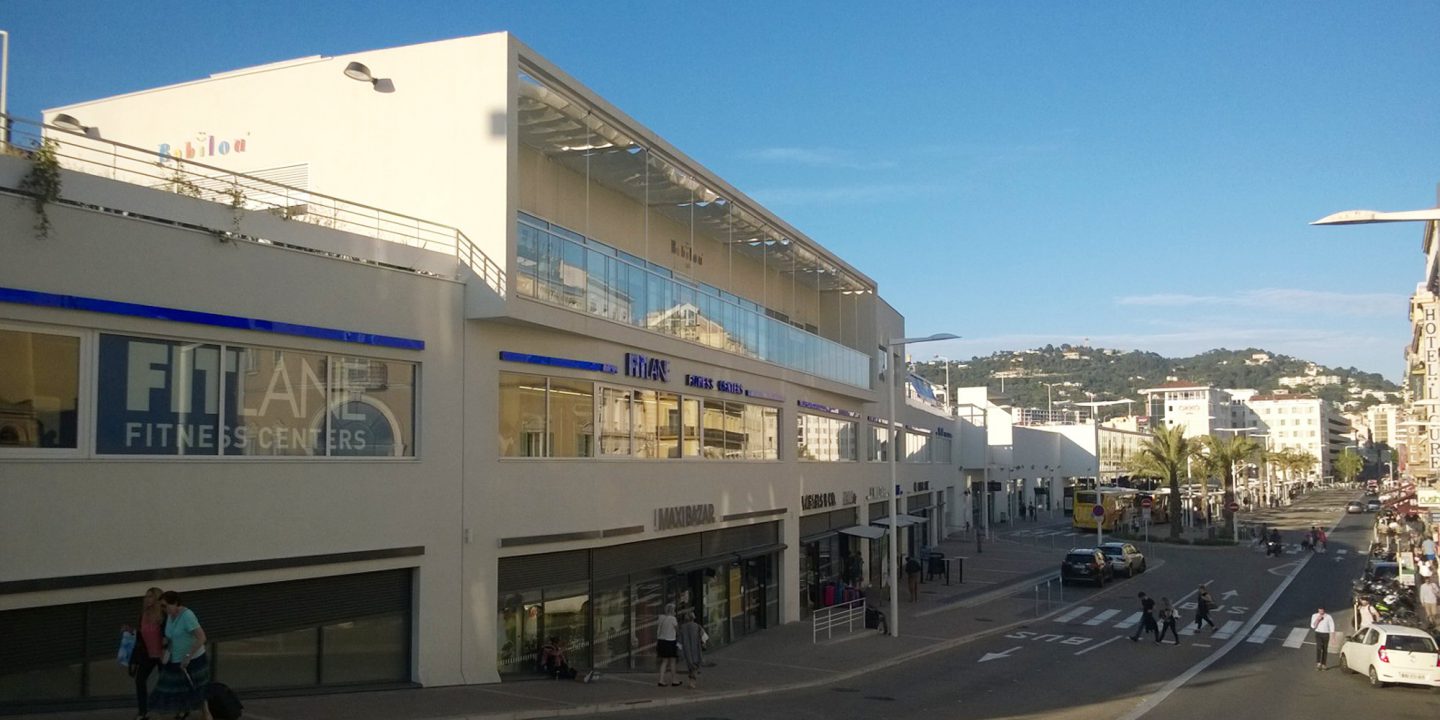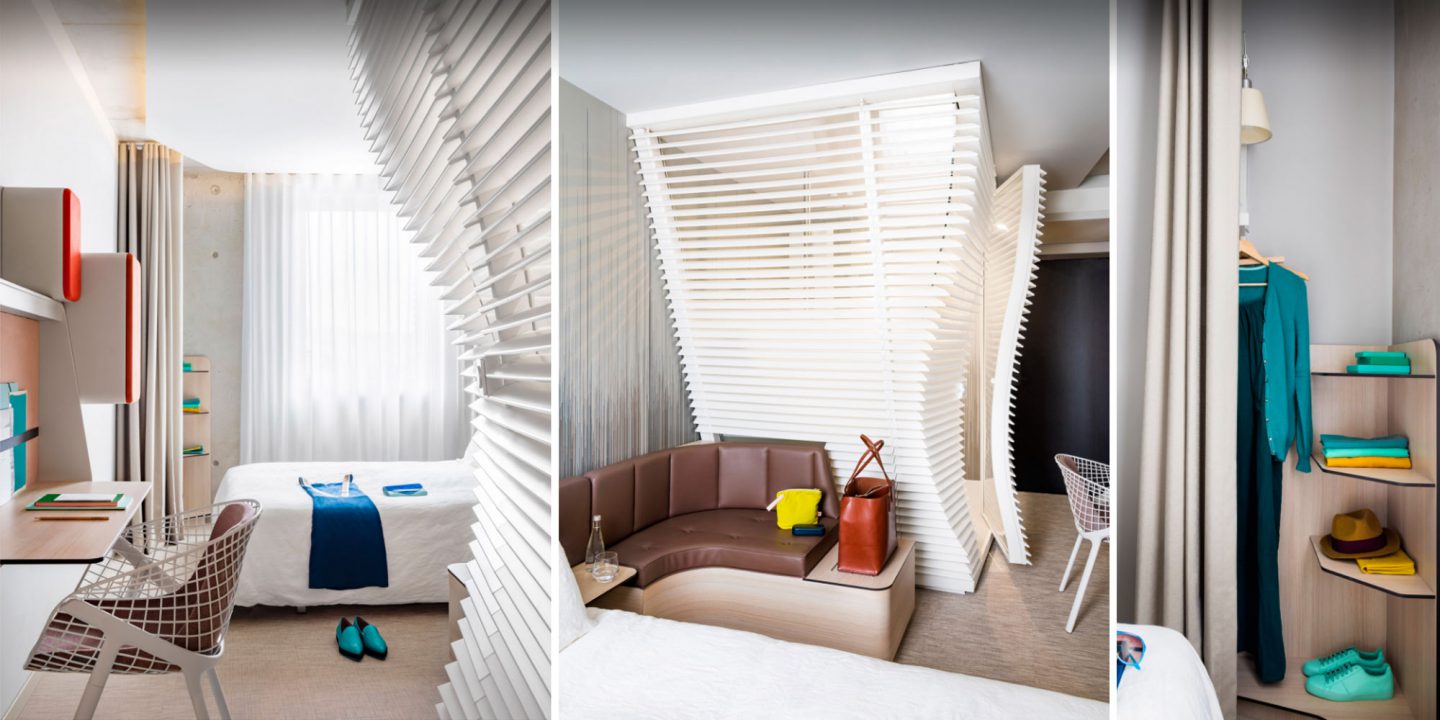Cannes railway station is located in the centre of town. Dating from 1863, the original station was part of the new Marseille/Cagne-sur-Mer line. In 1967, work was begun on the main railway shed. At the same time, the new station started to emerge. The original building was replaced. The structure covering the railway line and hosting the platforms, together with the new station, was opened in 1975.
In effect, the project consists of three components : the station itself, and two new buildings either side of the railway shed. The ensemble encompasses a number of functions, rendering the project as a whole a reference in terms of mixed urban planning, while at the same time rendering it a central factor in the city’s transport networks. In effect, the site includes shops, restaurants, a gym, a crèche and a 125-room hotel.
Although the programmes are different, a meticulous approach focusing on architectural coherence was applied in partnership with SNCF architects to create a shared visual identity and develop a global concept. The objective is to provide a genuine urban continuity based on a uniform architectural vocabulary in terms of materials, colours and the coverings of facades.
Road axes perpendicular to the station are marked by large white frames which serve as focal points in terms of the perspectives of the streets, thereby creating a specific identity. This motif is based on and reinforced by the frames of the shop windows. The hotel facade also has a monumental frame. All the buildings in the complex, made up of the station, the shops and the hotel, are white, a clear reference to the region’s magnificent seaside buildings, be they Modernist or decorative. Indeed, all the contours and profiles are white too: the hotel’s sliding shutters are tinted white, as are, the window frames.
Taking into account its situation as a restanque, or kind of raised level terrace, attached to the railway shed, the building plays a particular urban role, providing a transition between the lower part of the town and the urban boulevard.
